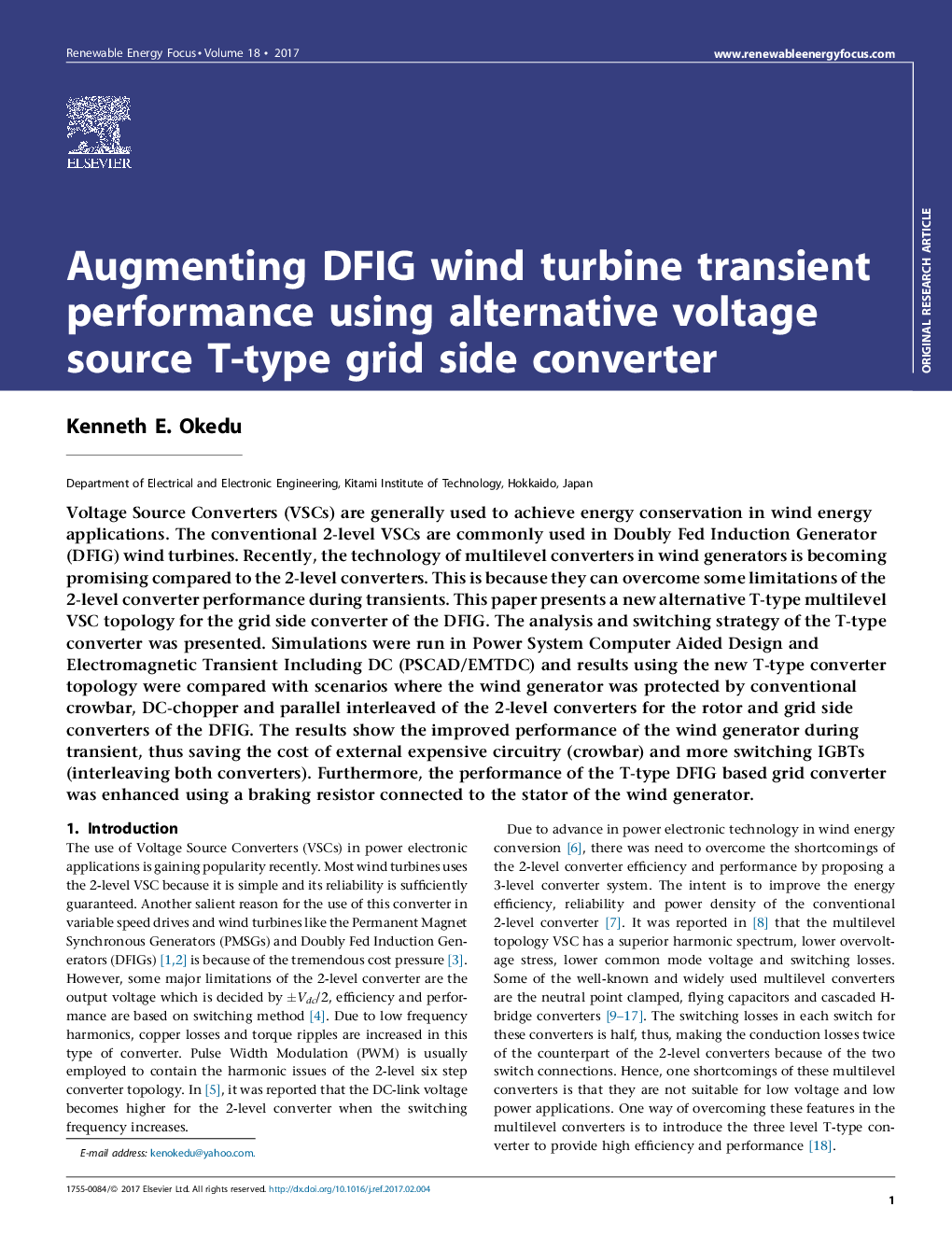| Article ID | Journal | Published Year | Pages | File Type |
|---|---|---|---|---|
| 5481819 | Renewable Energy Focus | 2017 | 10 Pages |
Abstract
Voltage Source Converters (VSCs) are generally used to achieve energy conservation in wind energy applications. The conventional 2-level VSCs are commonly used in Doubly Fed Induction Generator (DFIG) wind turbines. Recently, the technology of multilevel converters in wind generators is becoming promising compared to the 2-level converters. This is because they can overcome some limitations of the 2-level converter performance during transients. This paper presents a new alternative T-type multilevel VSC topology for the grid side converter of the DFIG. The analysis and switching strategy of the T-type converter was presented. Simulations were run in Power System Computer Aided Design and Electromagnetic Transient Including DC (PSCAD/EMTDC) and results using the new T-type converter topology were compared with scenarios where the wind generator was protected by conventional crowbar, DC-chopper and parallel interleaved of the 2-level converters for the rotor and grid side converters of the DFIG. The results show the improved performance of the wind generator during transient, thus saving the cost of external expensive circuitry (crowbar) and more switching IGBTs (interleaving both converters). Furthermore, the performance of the T-type DFIG based grid converter was enhanced using a braking resistor connected to the stator of the wind generator.
Related Topics
Physical Sciences and Engineering
Energy
Renewable Energy, Sustainability and the Environment
Authors
Kenneth E. Okedu,
